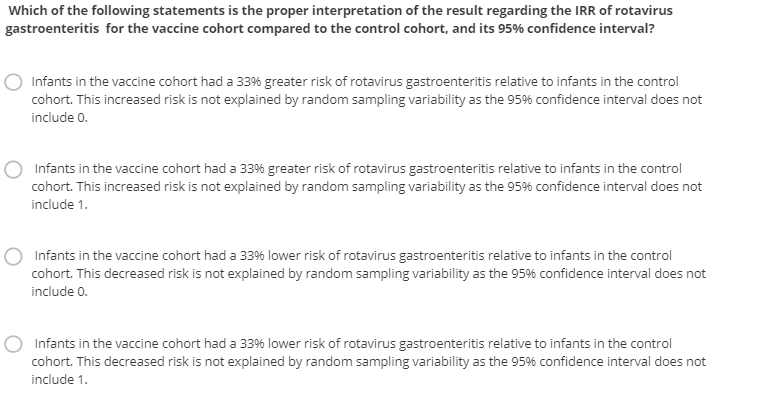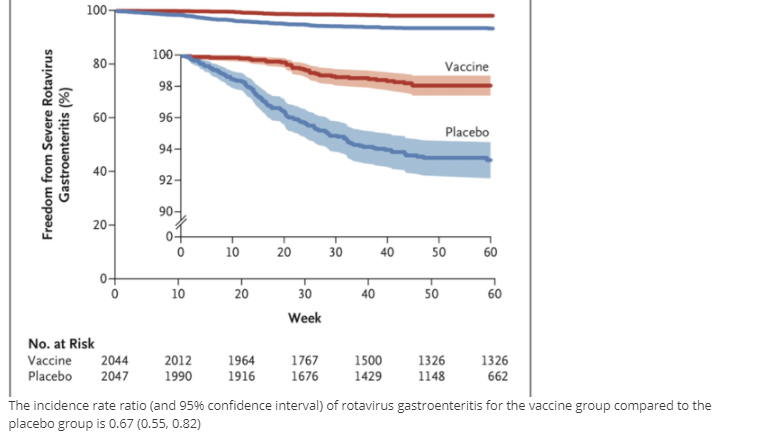Which of the following statements is the proper interpretation of the result regarding the IRR of rotavirus gastroenteritis for the vaccine cohort compared to the control cohort, and its 95% confidence interval? O Infants in the vaccine cohort had a 33% greater risk of rotavirus gastroenteritis relative to infants in the control cohort. This increased risk is not explained by random sampling variability as the 95% confidence interval does not include 0. Infants in the vaccine cohort had a 33% greater risk of rotavirus gastroenteritis relative to infants in the control cohort. This increased risk is not explained by random sampling variability as the 959% confidence interval does not include 1. O Infants in the vaccine cohort had a 33% lower risk of rotavirus gastroenteritis relative to infants in the control cohort. This decreased risk is not explained by random sampling variability as the 95% confidence interval does not include 0. Infants in the vaccine cohort had a 33% lower risk of rotavirus gastroenteritis relative to infants in the control cohort. This decreased risk is not explained by random sampling variability as the 95% confidence interval does not include 1.
A 2017 article in The New England Journal of Medicine details the results of a randomized clinical trial designed to evaluate the efficacy of a rotavirus gastroenteritis vaccine designed for infants. As per the authors:
“Each year, rotavirus gastroenteritis is responsible for about 37% of deaths from diarrhea among children younger than 5 years of age worldwide, with a disproportionate effect in sub-Saharan Africa. We conducted a randomized, placebo-controlled trial in Niger to evaluate the efficacy of a live, oral bovine rotavirus pentavalent vaccine (BRV-PV, Serum Institute of India) to prevent severe rotavirus gastroenteritis. Healthy infants received three doses of the vaccine or placebo at 6, 10, and 14 weeks of age. Episodes of rotavirus gastroenteritis were assessed through active and passive surveillance.”
The following Kaplan-Meier curves show the time to a diagnosis of rotavirus gastroenteritis separately for the vaccine and placebo samples. Infants were followed for up to 60 weeks after receiving the third dose of the vaccine (or placebo), until they either developed rotavirus gastroenteritis or were censored (lost to follow-up, or still rotavirus gastroenteritis free after 60 weeks from randomization).


Trending now
This is a popular solution!
Step by step
Solved in 3 steps


